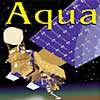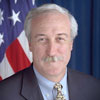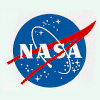|
Sunday:
May 19, 2002 | |
0001 GMT |
 |
Scientists see prediction of solar storms in future
Much like tornado watchers look to the skies for clues that a twister is forming, NASA and university scientists are watching the Sun in an effort to better predict space weather - blasts of particles from the Sun that impact the magnetosphere, the magnetic bubble around the Earth.
 FULL STORY FULL STORY
 |  |

|
 |
Aqua satellite going through on-orbit checkout
NASA's TRW-built Aqua Earth Observing System spacecraft is progressing smoothly through on-orbit checkout and activation following its successful launch on May 4 at Vandenberg Air Force Base, Calif. Aqua is the newest in TRW's spacecraft line designed for environmental research and operational remote sensing missions.
 FULL STORY FULL STORY
 AQUA LAUNCH COVERAGE AQUA LAUNCH COVERAGE
 |  |

|
 |
Lockheed building two more sats for SES Americom
Lockheed Martin Commercial Space Systems has announced that construction of two A2100 geosynchronous satellites is underway for SES Americom, Inc., based on a contract awarded in 2000. The Ku/Ka-band satellites, designated AMC-15 and AMC-16, will provide distribution of video channels as well as broadband data and internet services across North America.
 FULL STORY FULL STORY
 |  |

|
 |
|
Saturday:
May 18, 2002 | |
0500 GMT |
 |
Tropical greenhouse effect provides insight to Venus
A region in the western tropical Pacific Ocean may help scientists understand how Venus lost all of its water and became a 900-degree inferno. The study of this local phenomenon by NASA scientists also should help researchers understand what conditions on Earth might lead to a similar fate here. The phenomenon, called the 'runaway greenhouse' effect, occurs when a planet absorbs more energy from the sun than it can radiate back to space.
 FULL STORY FULL STORY
 |  |

|
 |
Slowly but surely...Artemis heads to high orbit
The experimental ion propulsion system designed to test a new form of technology for station-keeping on future satellites is performing well in its new role to get ESA's Artemis to geostationary orbit and save the day.
 FULL STORY FULL STORY
 |  |

|
 |
|
Friday:
May 17, 2002 | |
0310 GMT |
 |
Eleven more moons found orbiting Jupiter
Astronomers announced Thursday that they have discovered 11 additional moons orbiting the planet Jupiter, giving the giant planet more moons than any other planet in the solar system.
 FULL STORY FULL STORY
 UNIVERSITY OF HAWAII ANNOUNCEMENT UNIVERSITY OF HAWAII ANNOUNCEMENT
 |  |

|
 |
CfA: Culprit caught in gamma-ray burst mystery
Gamma-ray bursts appear to be the most powerful explosions in the Universe. Discovered by the Defense Department in the 1960's while looking for Soviet nuclear tests, their existence was a military secret for years.
 FULL STORY FULL STORY
 |  |

|
 |
Study reports origin of gamma-ray bursts
An international team of astrophysicists led by Shri Kulkarni of the California Institute of Technology has revealed new data showing that the explosive death of massive stars cause gamma-ray bursts.
 FULL STORY FULL STORY
 |  |

|
 |
Cosmic impacts tied to the rise and fall of dinosaurs
New abilities to detect layers of "space dust" in the Earth's crust are building geological evidence that comets or asteroids colliding with Earth not only helped wipe out the dinosaurs, but may have originally helped bring them to prominence about 200 million years ago.
 FULL STORY FULL STORY
 |  |

|
 |
|
Thursday:
May 16, 2002 | |
0134 GMT |
 |
Hypervelocity winds rage in the Sun's atmosphere
Winds of electrified gas rip through the solar atmosphere at nearly the speed of sound there, according to new observations from two NASA spacecraft. The new result shows that the winds and storms of the solar atmosphere - at speeds up to 200,000 miles per hour - so intense that they are more important than gravity in determining the density of the atmosphere.
 FULL STORY FULL STORY
 |  |

|
 |
Host of new appointments announced by NASA boss
Over the past few days NASA Administrator Sean O'Keefe has announced several appointments for the agency's leadership team, including a new chief engineer, heads of the Office of Aerospace Technology and Legislative Affairs, and a newly created senior management position for the space station and shuttle.
 NEW HUMAN SPACEFLIGHT POST CREATED NEW HUMAN SPACEFLIGHT POST CREATED
 BRADLEY PICKED AS NASA CHIEF ENGINEER BRADLEY PICKED AS NASA CHIEF ENGINEER
 CREEDON TAPPED AS AA FOR AEROSPACE TECH CREEDON TAPPED AS AA FOR AEROSPACE TECH
 HORNER NAMED AA FOR LEGISLATIVE AFFAIRS HORNER NAMED AA FOR LEGISLATIVE AFFAIRS
 |  |

|
 |
NASA modifies Spacehab contract for shuttle flights
NASA's Johnson Space Center in Houston has awarded a $42.5 million contract modification to Spacehab, Inc. to supplement support for the STS-116 and STS-118 Space Shuttle missions to the International Space Station, currently scheduled for 2003.
 FULL STORY FULL STORY
 |  |

|
 |
NASA picks partner for aviation research
NASA has selected a partner for a joint venture to develop and demonstrate air mobility technologies for transportation using small aircraft and small airports.
 FULL STORY FULL STORY
 |  |

|
 |
Long March rocket launches two Chinese satellites
China launched a weather satellite and marine research craft Wednesday atop a Long March 4B rocket. Liftoff occurred at 0150 GMT from the Taiyuan launch site in northern China.
 FULL STORY FULL STORY
 |  |

|
 |
|
Wednesday:
May 15, 2002 | |
0518 GMT |
 |
Atlas 5 rocket set for simulated launch day
Lockheed Martin's Atlas 5 rocket will be rolled back to the launch pad at Cape Canaveral today for the last full countdown simulation before the planned July 8 inaugural flight.
 MISSION STATUS CENTER MISSION STATUS CENTER
 |  |

|
 |
'Flying saucer' dusty disk found around young star
A team of astronomers have discovered a dusty and opaque disk surrounding a young solar-type star in the outskirts of a dark cloud in the Milky Way. It provides a striking portrait of what our Solar System must have looked like when it was in its early infancy. Because of its unusual appearance, the astronomers have nicknamed it the "Flying Saucer."
 FULL STORY FULL STORY
 |  |

|
 |
New Earth monitoring technology brought to light
A new, cost-effective technology based on the venerable Global Positioning System may soon revolutionize the way Earth's atmosphere is monitored according to scientists at NASA's Jet Propulsion Laboratory.
 FULL STORY FULL STORY
 |  |

|
 |
|
Tuesday:
May 14, 2002 | |
0116 GMT |
 |
Cannibalistic stars hold clue to Big Bang
A team of UK astronomers announced this month the discovery of cannibalistic stars that explain one of the mysteries surrounding the Big Bang. The stars are almost as old as the Universe and they reveal what space was like in the very beginning.
 FULL STORY FULL STORY
 |  |

|
 |
U.S. lends orbiting weather satellite to Japan
The United States has agreed to lend Japan a geostationary environmental satellite to ensure weather data from the Western Pacific are available continuously should a weakening Japanese satellite fail, the National Oceanic and Atmospheric Administration has announced.
 FULL STORY FULL STORY
 |  |

|
 |
Eight die in collapse at historic Baikonur hangar
Eight workers are believed to have died when the roof of an historic hangar collapsed on Sunday. The hangar, which was built for the Russia's ill-fated moon program, housed hardware from the abandoned Buran shuttle project and a processing facility for Starsem.
 FULL STORY FULL STORY
 |  |

|
 |
|
Monday:
May 13, 2002 | |
0402 GMT |
 |
Extreme machine simulates space conditions
Conditions in space are unlike anything we experience on Earth. Incredible extremes of temperature that can switch in an instant, startling vacuum conditions, not to mention radiation - it's a tough life for a spacecraft. So it is essential to make sure they are prepared to withstand these conditions before they are launched into this wholly unfriendly environment.
 FULL STORY FULL STORY
 |  |

|
 |

